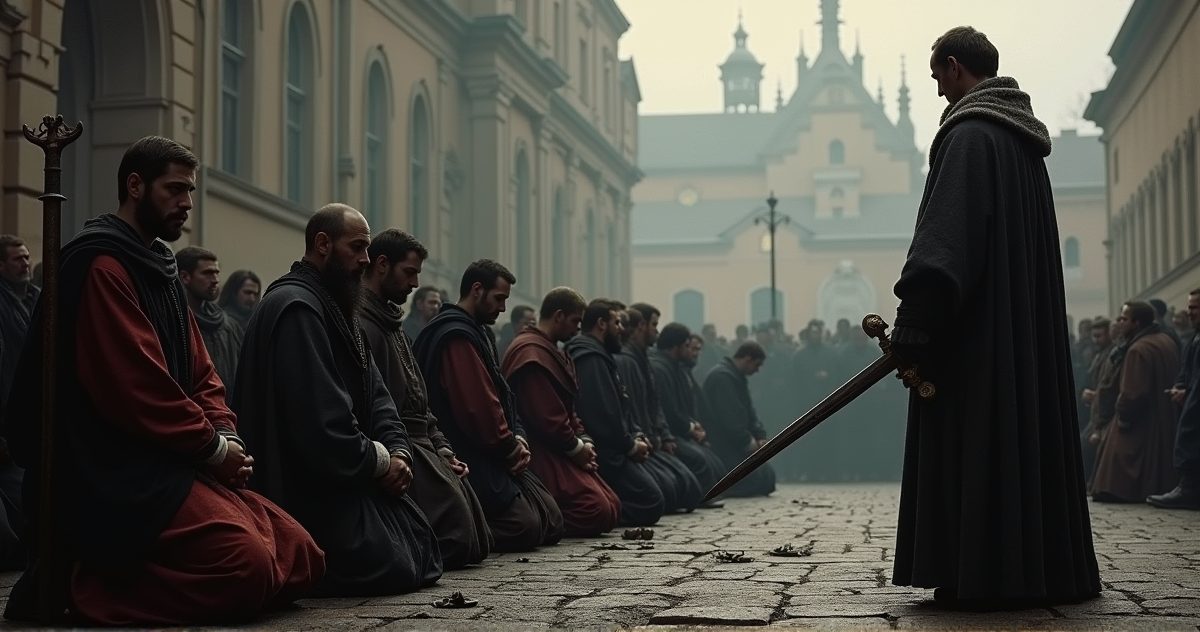I stumbled upon a truly haunting piece of history recently – the execution of 27 Bohemian nobles in 1621. It wasn’t a grand battle or famous siege, but a grim, methodical event that felt… deeply personal, even centuries later. I spent a lot of time researching it, and wanted to share what I found. My English isn’t perfect, so bear with me, but I hope I can do this story justice.
A Day of Reckoning in Prague
The event happened in the Old Town Square of Prague, following the Battle of White Mountain. It wasn’t about military victory, but about crushing dissent. These men were leaders of the Protestant Bohemian Estate – intellectuals, landowners, and figures who’d challenged the authority of the Habsburg Emperor Ferdinand II.
The execution wasn’t a spontaneous outburst of violence. It was planned. A formal, public display designed to send a message. Each man was brought forward, allowed a final speech (often a defense of their faith), and then… beheaded.
It’s easy to get lost in dates and names, but what struck me was the detail surrounding this event. It wasn’t just a list of victims; it was a snapshot of a whole world, filled with superstition, skill, and cold calculation.
The Executioner and His Work
The man carrying out the sentences was Jan Mydrdal, the executioner. He wasn’t some anonymous brute. He was a skilled professional, respected and ostracized. Executioners held a strange position in society – they were necessary, but deeply feared and avoided.
Mydrdal wasn’t just swinging a sword; he was performing a craft. He used four swords during the execution. The first two were used for the initial eleven heads, and he was expected to deliver a clean cut with each swing. A botched job would have been a major disgrace.
His payment was substantial – over 600 ‘kop’ of silver. That translates to roughly 36,000 silver pieces – enough to buy a nice house in Prague at the time. It was a grim trade, but a lucrative one.
But the story doesn’t end there. Mydrdal’s wife committed suicide shortly after the event, unable to cope with the darkness surrounding her husband’s profession. And while he was financially secure, he lived a largely isolated life, feared and avoided by most.
Details That Haunt
The execution wasn’t just about the men who died. It was about the things that happened around the event.
- The severed heads were displayed on spikes for several weeks as a warning to others.
- Superstitions abounded. Some believed the eyes of the executed continued to see, and covered them with cloth.
- Even in death, details emerged. Two of the men, Kutnauer and Sušický, appeared to be conspiring with each other even as they were being hanged. Witnesses claimed they were clutching each other’s hands, as if sharing a final, silent message.
Why This Matters
I think this story is important because it reminds us that history isn’t just about kings and battles. It’s about the lives of ordinary people – the victims, the executioner, the witnesses. It’s about the choices they made, the beliefs they held, and the consequences they faced.
It’s a stark reminder of the dangers of religious intolerance and the brutality of political repression. But it’s also a testament to the enduring power of the human spirit – even in the face of death.
I hope sharing this account – a piece of history I found so captivating – will spark your curiosity as well. It’s a dark story, certainly, but one that deserves to be remembered.
